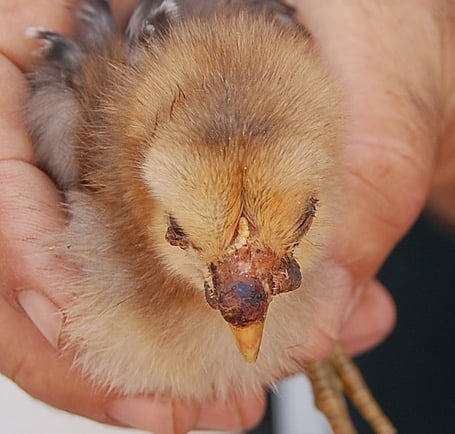Add your promotional text...
Recognizing Upper Respiratory Illnesses in Chickens: Key Symptoms and Early Detection
10/3/20244 min read


Understanding Upper Respiratory Illnesses in Chickens
Upper respiratory illnesses in chickens encompass a range of diseases affecting the nasal passages, sinuses, and trachea. These conditions are primarily caused by viral and bacterial pathogens, including infectious laryngotracheitis virus, Mycoplasma gallisepticum, and avian influenza. Understanding these illnesses is crucial for poultry farmers, as they can lead to significant health issues within flocks and impact overall farm productivity.
Contagion is a key characteristic of upper respiratory illnesses. The pathogens responsible for these diseases are highly infectious and can spread rapidly among chickens through direct contact, airborne transmission, and contaminated equipment. Even seemingly healthy birds can act as carriers of these pathogens, facilitating the illness's spread within a flock. Hence, monitoring for symptoms and implementing biosecurity measures is essential to prevent outbreaks.
These illnesses can exhibit a variety of clinical signs, including nasal discharge, coughing, sneezing, and difficulty breathing. In addition to respiratory symptoms, affected chickens might also show reduced appetite and lethargy, which can lead to decreased egg production and slower growth rates. The implications of these diseases extend beyond animal welfare, as they can result in financial losses for farmers due to elevated veterinary costs and decreased productivity.
Poultry farmers must remain vigilant in observing their flocks for any signs of upper respiratory illnesses. Early detection not only aids in effectively managing the health of the birds but also helps mitigate the risk of the disease spreading to other birds or flocks. By understanding the nature of these illnesses, farmers can take proactive steps to ensure the health and productivity of their chickens, thereby safeguarding their livelihoods.
Key Symptoms of Respiratory Illnesses
Understanding the key symptoms of respiratory illnesses in chickens is crucial for early detection and effective management. Poultry can exhibit a range of signs indicating potential respiratory distress. One of the primary symptoms to observe is nasal discharge, which may appear clear or cloudy and can vary in severity. Excessive nasal discharge, especially if accompanied by a foul odor, may indicate an underlying infection that warrants immediate attention.
Coughing is another significant symptom that should not be ignored. Chickens may produce audible coughs, which can range from a soft sound to more pronounced, harsh noises. Coughing can be indicative of bronchial irritation or infection. Observing a chicken coughing frequently may signal a need for further assessment. Additionally, sneezing is an important symptom to monitor. Chickens may sneeze occasionally due to irritants, but frequent sneezing, particularly if it is forceful or associated with other symptoms, may necessitate further investigation into respiratory health.
Wheezing is often a critical sign of respiratory illness in chickens, and it may indicate inflammation or narrowing of the airways. This sound can be subtle but is characterized by a high-pitched noise made during breathing. A wheezing chicken may exhibit labored breathing as a result of the respiratory distress. Furthermore, other symptoms worth noting are lethargy, reduced appetite, and changes in vocalizations, all of which may accompany respiratory issues.
Regular observation of these symptoms is essential for maintaining the health of your flock. Identifying these key symptoms early can lead to prompt action, potentially preventing more severe health complications. Early detection not only supports individual birds but also safeguards the overall well-being of the entire flock.
The Importance of Early Detection
The early detection of upper respiratory illnesses in chickens is crucial for maintaining the overall health of a flock. Respiratory diseases can spread rapidly among birds, often resulting in significant morbidity and, in severe cases, mortality. By identifying symptoms promptly, poultry farmers can take immediate action to isolate affected birds, provide necessary treatment, and implement biosecurity measures to prevent further transmission. This proactive approach not only safeguards the health of the individual chickens but also protects the entire flock from potential outbreaks.
Farmers can employ several practical strategies for monitoring chicken health effectively. Regular observations during feeding time or while the birds are in their coops can reveal subtle changes in behavior or appearance that may indicate illness. Symptoms such as sneezing, coughing, nasal discharge, and changes in vocalization should be noted, as these can be early indicators of respiratory problems. Keeping a health log for each chicken or the flock as a whole can help track any unusual patterns, thus making it easier to identify troublesome trends.
Implementing regular health checks is another beneficial practice. Establishing a routine schedule for physical examinations can help catch illnesses before they escalate. During these assessments, farmers should check for signs of respiratory distress, such as labored breathing or swelling around the eyes and nostrils. Furthermore, maintaining appropriate housing conditions—such as good ventilation, cleanliness, and appropriate stocking density—can significantly mitigate the risk of respiratory diseases. By fostering an environment conducive to health, farmers can enhance the resilience of their flocks.
In summary, early detection of respiratory issues in chickens plays a vital role in maintaining flock health and preventing the quick spread of illness. Through vigilant monitoring and regular health assessments, farmers can ensure their birds remain healthy and productive.
When to Seek Veterinary Help
Recognizing the signs of upper respiratory illnesses in chickens is crucial for maintaining flock health. However, there are specific circumstances when farmers should seek professional veterinary assistance. Early intervention can make a significant difference in the outcome of an illness and reduce the risk of complications that can arise from untreated conditions.
One important criterion for determining whether to consult with a veterinarian is the severity of the symptoms observed. If chickens exhibit persistent or worsening symptoms such as nasal discharge, coughing, or labored breathing, it is advisable to seek expert help. In particular, sudden changes in behavior, such as decreased activity or loss of appetite, can indicate a serious underlying issue that warrants immediate attention. Additionally, if there are multiple birds showing similar symptoms, this may signal a contagious disease that could spread rapidly through the flock, necessitating professional intervention.
Another factor to consider is the potential need for diagnostic tests to identify the specific illness affecting the birds. A veterinarian can perform examinations, take samples, and run tests to determine the exact cause of respiratory issues. This information is critical for implementing the appropriate treatment. Some upper respiratory ailments may respond to antibiotics or other medications, while others might necessitate more focused interventions, such as vaccinations or supportive care.
Chickens, being vulnerable to various respiratory infections, require attentiveness from their owners. Early recognition of symptoms and understanding when to seek veterinary assistance can significantly improve the prognosis for affected birds. Ultimately, proactive management is essential for safeguarding the health of your flock, ensuring they remain productive and thriving.
